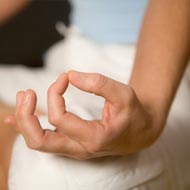- Aromatherapy (36)
- Benefits of Yoga (282)
- Home Remedies (1087)
- massage therapy (9)
- Preventive Therapy (135)
- Running (41)
- Skin Care (15)
- Stress Relief (25)
- Stretching (5)
- walking (33)
- Womens Health (14)
- Yoga Benefits for Pregnant Women (16)
- Yoga Benefits for Students (3)
- Yoga for Children (11)
- Yoga for Holistic Living (37)
- Yoga for Midlife Crisis (3)
- Yoga for Senior Citizens (2)
- Yoga for the Workplace (1)
- Yoga Health Tips (185)
- Yoga Practice during Menstruation (5)
Most Challenging Yoga Styles

It’s not very easy to answer your query in the absence of information regarding your gender, age and health status. Then again, if we were to go by the general parameters it is felt that that Power Yoga, Bikram (Hot) Yoga and Flow (Vinyasa) Yoga are the most challenging of the lot. This is owing to the fact that these styles put their students through a grueling and highly disciplined routine. Integral Yoga and Kripalu Yoga, on the other hand, are said to be far gentler.
Although all the basic Yoga styles are rather challenging, it again depends on your thought process and how you approach the subject. Some Yoga styles stress the importance of holding the poses for long; this can be extremely challenging. Then there are those that link a set of poses in a single flow (or Vinyasa), that constitutes a physical workout. A lot also hinges upon your Yoga instructor, the shape you’re in when you start the Yoga sessions and, of course, your overall approach.
Vinyasa Yoga:
This is another name often used to describe a certain type of Yoga style. Vinyasa means flow and in this style it is breath-synchronized movement. Vinyasa sessions are mostly more energetic and dynamic as compared to other Hatha Yoga classes. They usually include a set of poses starting from Surya Namaskar (Sun Salutations), where the emphasis is on matching breath and movements. Surya Namaskar warms up the body in preparation for the more intense stretching poses. Some Vinyasa schools teach a slower version of Yoga, one of the advantages of which is that students are able to concentrate on their alignment. By moving slowly in and out of the poses you are able to pay attention to the poses and also build more strength.
Ashtanga Yoga:
This Yoga style is also athletic, intense and rather demanding. In Sanskrit Ashtanga means “eight-fold path or eight limbs”. Here, every time the students do a series of postures in the same order. Ashtanga Yoga is rigorous because of the constant movement from posture to posture.
Power Yoga:
Although based in Ashtanga Yoga, Power Yoga does not necessarily adhere to the same series of postures. Power Yoga was developed in the United States in the 90s and mainly focuses on strength and flexibility. It is an excellent option for those who take Yoga more as an exercise than a spirituality-based practice. Within Power Yoga you will find a great deal of variation even though this depends on your instructor.
Bikram Yoga:
Bikram Yoga is also called Hot Yoga because it is practised in a hot room (generally 36-37 degrees Celsius/95-100 degrees Fahrenheit). The heat generated is said to encourage cleansing of toxins through perspiration and loosens up the muscles. Hot Yoga includes a set of 26 poses done repeatedly.
The various styles of yoga therefore present various challenges. Whichever form of Yoga you opt for, it depends on how much you wish to ‘challenge’ yourself. Never mind how much you wish to challenge yourself, or why you choose to take up Yoga; always remember that Yoga is an intensely personal practice.
- RSS Feeds -
- All posts
- All comments
- Are you ready to take it to the next level? A regular yoga practice can be a powerful tool in bringing health and wellbeing ...
- Walking Sandals For Women There are certain points to be kept in mind when selecting the right walking ...
- Correct Running Techniques Running style of every runner is different depending on their body type, gend...
- Yoga To Relax Muscles Yoga is a spiritual discipline. It includes a set of poses (asanas) intended...